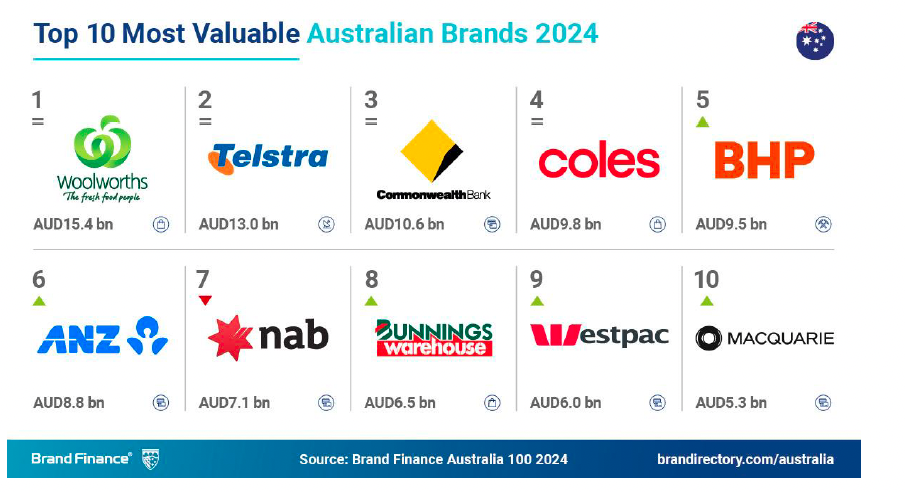Eyes on the fries: KFC ditches CX program with 150 versions for fused employee-customer experience, turns staff engagement into revenue growth with global experience management strategy
What you need to know
- Linking employee experience to customer experience is vital to KFC’s growth strategy. Data from the UK shows restaurants with highly engaged staff get fewer negative guest scores and more return visits. A 1 per cent lift in “top-box” guest experiences could deliver millions in incremental revenue.
- KFC’s “Listens” program is driving cultural and operational change across 30,000 restaurants globally. The global CX and EX initiative, built on Qualtrics tech, replaced 150 fragmented programs with a scalable, standardised platform that still allows for local nuance.
- By uniting CX and EX under a single Experience Management (XM) umbrella, KFC is breaking down silos. The rebrand to “KFC Listens” and integration of CX/EX teams under one leadership also signalled a shift in priority to action over measurement.
- Real-time insights are driving tangible product improvements say key execs. In Australia, fry quality flagged by customers has triggered a new “taste of fries” metric and product tests to suit off-premise consumption.
- KFC now tiers its markets by XM maturity to tailor support and accelerate impact. A new three-tier model – foundational, evolving, growing – helps KFC’s global team adapt resources and product features to each market’s stage of development.
- Customer feedback informs ops at a granular level. In India for instance, complaints about missing items led to redesigned order tickets, app improvements and refund protocols – lifting guest satisfaction from 15 per cent to 52 per cent in four months while making life much less complicated for front-line staff.
- A “freedom within a framework” approach is key to managing complexity. While the program provides global consistency, individual markets retain the flexibility to customise based on local needs, ensuring higher adoption and relevance.
- Cross-functional partnerships are baked into the program’s design. From frontline teams to franchisees and global departments, KFC engaged stakeholders early and continuously, ensuring tools like dashboards were useful from day one.
- The focus is on continuous evolution, not score-chasing – KFC is building XM capabilities that keep pace with tech, behaviour, and channel shifts – deliberately avoiding a “set and forget” mentality.
When it comes to metrics, simply telling someone, 'Here’s your target – hit X per cent on overall customer satisfaction,' drives very different behaviour than saying, 'Here’s what needs improvement in the customer experience, and here are the actions you can take.'
For KFC Australia, the path to operational excellence – and customer retention – runs directly through the fry station.
Abby Czito, Senior Manager of Global XM Insights & Analytics at KFC, put it plainly. “How many of you have ever gone through a drive-thru, pulled away from the window, poked the bag, and snacked on a few fries on the way home – only to find soggy, stale, or burnt fries?” she asked. “I definitely have. Fries might be my favourite food, and I can’t tell you how frustrating that experience is. Nobody likes a soggy, stale, or burnt fry.”
As it turns out, neither do Australian customers. Czito said that following the launch of KFC Listens in Australia about a year ago – the company’s cross-XM program – it became immediately clear that “fries, by a significant margin, are the most polarising item on our menu.”
The kicker? “Our fries in Australia haven’t changed in a long time. A fry’s a fry, right? But our business has,” says Czito who was speaking at last week’s Qualtrics X4 customer conference in the US. “The shift is largely driven by off-premise consumption. As delivery, takeaway and pickup have grown, the product that leaves the fryer needs to be engineered to hold up longer – and in many cases, it hasn’t been.”
The problem wasn’t purely product-based. “As our business has grown, we’ve naturally introduced new operational processes,” she said. One unintended consequence of this evolution is that frontline teams occasionally select the wrong cycle on the fryer when preparing fries. “It’s a simple mistake – but one that has a real impact on the guest experience.”
That’s where the Qualtrics platform kicks in. “Without it, we wouldn’t have been able to identify operational misses like this as they happened or respond quickly to make things right. But now, she said, “We hear our guests loud and clear.”
Loud and clear enough to warrant an experiment. “Don’t mess with the fries,” Czito warns. “That’s why this year, I plan to test a new kind of fry in Australia.”
The company is now implementing a new “Taste of fries” metric – a qualitative and quantitative indicator designed to ensure every serve not only meets but exceeds expectations.
It’s the kind of granular, customer-led insight that might once have sat in a complaint inbox for weeks – but is now fuelling operational shifts in near real-time. And in KFC’s case, it’s one small example of a much bigger move to hardwire the connection between team member actions, product quality, and guest experience. And it formed the basis of the fast food leader’s breakout session in the spotlight at the conference.
Speaking earlier in the conference, COO Rob Swain described the context KFC now operates in.
“In the past, the Quick Service Restaurant business was much easier,” he told attendees. “There were three channels, drive through, front counter, and takeaway. Since then, there’s been an absolute explosion in convenience, fuelled by technology for guests.”
“What that means is we’ve really added more access to the brands. If you’re a restaurant general manager now, you’ve got to cope with kiosks, and click and collect, and delivery, and table service.”
Delivering enhanced customer experience also adds much more complexity to the employee experience, he said.
“We’re in this fascinating situation where we’re managing the balance between what’s happening for our guests and what’s happening for our team members. The interesting thing is that our guest expectations have continued to rise year on year. They want an increasingly personalised, [and] increasingly digital experience.”
Which means staff have to keep delivering more.
We did have a legacy CX program that was live across every market, but when we built it, we partnered with the [international] markets to customise and configure it according to their exact needs—their technology, how they wanted to work, their questions… That's how we ended up with roughly 150 different iterations of our CX program.
150 CX iterations?
To add to the challenge, KFC is a highly decentralised business, says Sarah Baker, KFC’s Director, Global Customer Experience. “The majority of our 30,000-plus restaurants are owned and operated by nearly 400 franchisees. We operate in over 150 countries and serve customers in countless languages.”
Launching a global experience management program into this environment is extremely complex, she said.
“It took an enormous amount of organisational alignment.”
Despite those challenges – which she said at times felt insurmountable – “We knew that this is something we absolutely had to do, and that it would be essential for our business growth.”
KFC made its first tentative steps towards bringing the worlds of employee experience and customer experience together in 2020 when it kicked off a pilot program that ran into 2022. It finally signed off on the full program in December 2022.
Per Baker: “We did have a legacy CX program that was live across every market, but when we built it, we partnered with the [KFC’s international] markets to customise and configure it according to their exact needs—their technology, how they wanted to work, their questions.”
And that, she says, is how KFC ended up with roughly 150 different iterations of its CX program.
“That didn’t help us leverage our scale – we couldn’t even compare across business units, let alone at a global level. We also recognised that our capability around customer and team member listening varied widely.”
What’s worse, the old system was driving the wrong outcomes.
“When it comes to metrics, simply telling someone, ‘Here’s your target – hit X per cent on overall customer satisfaction,’ drives very different behaviour than saying, ‘Here’s what needs improvement in the customer experience, and here are the actions you can take.'”
According to Baker, “We were in a situation where our restaurant managers had become very good at achieving high OSAT (Overall Satisfaction) scores. On paper, it looked like the experience was fantastic. But when we looked at the business and its growth, it just wasn’t taking off with the same acceleration.”
That revelation led the leadership to question whether the listening program was really delivering the outcomes it needed.
“It had become more of a check-the-box exercise, she said. “We weren’t getting the data and insights required to actually improve the experience and drive business growth.
She also acknowledged that KFC had a narrow view that largely hinged around a post-experience survey, and for the most part, the individual markets did not customise their programs much beyond that. “We simply weren’t seeing the entire picture.”
“As consumer behaviour shifted, more unsolicited feedback started coming in – conversations were happening on Google Reviews and other channels we just weren’t capturing.
Baker also noted that the legacy program was predominantly seen as a program for restaurant managers to improve the experience in individual restaurants. “That’s fantastic, and it’s still a key cornerstone of our FKC Listening program today but we weren’t really able to go beyond that.”
“We didn’t look at things from a more macro level, which meant we were leaving a lot on the table –whether it was efficiently solving problems, sharing best practices, or understanding how one market solved a problem that another market could adopt. We were leaving all of that on the table. We were also missing out on cross-functional uses of the program.”
KFC set itself on a path to addressing the shortfalls with its next-gen program. “We built a global blueprint to establish a consistent global standard – so markets would clearly understand the program elements, how to structure questions, how to configure the technology to be able to close the loop. It was very clearly laid out.”
Critically, KFC developed a program that combines employee experience with customer experience and mandated that markets launch both components at the same time.
“This was meant to signal to the organisation that we recognise that the two are very deeply linked.”
It was a brave move. At the time organisations typically treated EX and CX as separate disciplines, the former run by Human Resources and the latter by marketing or perhaps digital business units. And indeed for many organisations that’s still the case.
“To truly maximise the value of this program, we needed to look at both experiences together – and we needed to be listening to both customers and employees.”
It’s an approach she said, that really helped drive change within the KFC. “It helped break down silos since it brought different teams together to launch the program.”
Listens comes home to roost
But it wasn’t easy as she readily admits.
All of KFCs markets are structured differently and each one has its own franchisees to manage. The team running the KFC Listen program knew it needed time to bring franchisees on board and align their resources. That’s why, according to Baker, KFC opted for a quarterly rollout – basically launching the program across 3,000 restaurants per quarter. No pressure.
“And we staggered it by region to give each market the time and space to get ready. I’m really happy to say we’re now at about 70 per cent of our restaurants live with KFC Listens, and we’ll launch the remaining balance later this year.”
“We knew we didn’t want to end up back where we started in just a few short years. We didn’t want this to be a “set it and forget it” program that over the course of a couple of years becomes obsolete as consumer behaviour shifts, or as tech changes. We wanted something that would stand the test of time – something that could keep evolving with channel growth and the way people interact with brands.
To that end, she said, “We’ve designed the program to be continuously innovating and growing our CX and EX capabilities as an organisation.”
We needed a model that would let the program evolve over time, so it didn’t just turn into another tracking program. We created an XM Growth Model.
Mini-me markets
For Jenn Donegan, Manager, Global XM Strategy & Program, one key question that needed answering was how to embed experience management into the KFC culture.
As each of KFC’s markets are structured almost like mini organisations across the globe, the company needed a structured way to partner with each of them to build an XM culture within their own teams.
“We made three key pivots. The first was bringing together EX and CX. This was really key to our repositioning.”
The first step KFC took was to merge the CX and EX under a single experience management umbrella – and thus KFC Listens was born.
The nomenclature mattered because it meant that whenever KFC spoke with internal or external partners or stakeholders, it always referred to EX and CX together as a single idea, avoiding conversations that treated them as separate silos.
“The next step involved restructuring the global team. We’re now a combined EX and CX team under one leadership, and that has further allowed us to have more connected conversations and better alignment across the organisation.”
The change also involved a mind-shift beyond what Donegan described as “measurement and score chasing” to one centred on taking meaningful action.
“This is a hot topic for everyone who is going through an XM transformation, and we knew we weren’t going to solve it overnight. But we did some tactics to move the needle towards a more action-oriented culture.”
For instance, when highlighting a success within the KFC Listens program, the team made sure to focus on the actions being taken – by frontline operators, markets, and global teams – not just on improved scores.
“We also focused on the resources we provided to our frontline operators. Our old program was [focussed on driving up overall satisfaction, and that’s a hard thing to break over time.”
She said, “When resources were provided they were purpose-built to influence where we wanted them to focus – basically better experiences rather than better experiences-scores.
“Finally, we made XM something for everyone and KFC Listens is now a company-wide resource, accessible across the organisation.
The previous program focused primarily on the frontline operator, and in the new system they are still the number one stakeholder says Donegan. “They’re closest to our customers and play a critical role in driving better experiences. But we wanted to make sure in this pivot that it allowed us to create more relevant views of the data for our cross-functional departments.”
KFC also used the opportunity to stand up committees bringing cross-functional teams together and helping them integrate both customer and employee insights into their own business priorities and initiatives.
Growth mode
The next big step involved providing KFC markets with a clear, structured way to do the same at the local level – which Donegan acknowledges was a tough thing to build.
“We needed a model that would let the program evolve over time, so it didn’t just turn into another tracking program. We created an XM Growth Model.”
The goal of the model is to enhance how our global team partner with markets and help accelerate both their XM capabilities and the overall impact of KFC Listens.
KFC wanted to do three things that the old strategy didn’t fully address.
- Elevate the market’s XM capabilities by equipping them with the skills and systems they would need to innovate successfully.
- Provide a model that allows for tailored success.
- Create a model to drive progress across all markets, no matter their starting point, rather than being drawn in the gravity of the larger and more successful markets.
Ultimately the XM Growth Model KFC settled on helped it to assess an individual market’s current maturity using KFC Listens along with their overall XM maturity. That then allowed them to be grouped into one of three tiers: foundational, evolving, and growing.
Donegan said foundational markets are typically focused on taking action at the frontline level and they are beginning to share insights more broadly across their teams. Evolving markets, meanwhile, have taken that further – using insights to inform business decisions while also demonstrating more engagement in the program.
Growing markets are the most mature she said, and have embedded experience deeply into their culture. These markets are typically more focused on maximising the program’s impact.
According to Donegan, depending on which tier a market falls into, the model outlines a different set of capabilities or skills needed to drive the program, a tailored set of offerings that the global team can use to support and grow those skills, and a unique set of product enhancements to advance both listening and action-taking.
“The final part of the model is about evolving the program itself to help strengthen market capabilities.”
The team asked themselves whether certain aspects of the program could be further improved. In simple terms, what could they do differently, or enable markets to do differently, to help them capture richer insights on their key initiatives – and, in turn, foster that cross-functional XM collaboration?
One solution KFC designed was ad hoc XM research which allows markets to quickly launch customer and employee experience (VX) touchpoints. With this tool, they can start gathering real-time insights into what’s working well for customers and then what’s really not working well for our employees and making their jobs harder, Donegan said.
If we simulated just a 1 per cent increase in the number of guests who had a top-box experience during the timeframe of this study, we would have seen hundreds of thousands more visits and millions of dollars in potential revenue uplift across the entire UK business.
Beyond Australia’s soggy fry dilemma, KFC’s Czito offered several examples of how the global program was delivering improved outcomes for customers.
In India, for instance, she said, “Guests told us we sometimes forget condiments and beverages. Now, to you and me, that might seem like a little thing in the context of this overview – but if you’re the guest waiting for that order, it’s really frustrating. It might not feel like a little thing at all”
Based on the insight from the KFC Listens program, the company reassessed its customer delivery journey, said Czito
“We used this insight to do a couple of things. First, we modified our order ticket layouts in restaurants to include much less information, while also highlighting the really important details—especially the ones that are easy to forget.”
Next KFC optimised its order status tracker within the app.
“And third, we implemented new refund protocols for guests going through our recovery process, to make that experience as seamless as possible.”
“Guest satisfaction started to rise at a significant pace after we made these changes,” she said, adding that satisfaction increased from 15 per cent to 52 per cent in just four months.
Linking EX to CX
In a preliminary study out of the UK, KFC found that team member engagement was a key driver of guest satisfaction.
To put that a few different ways, Czito said, “Restaurants with low team member engagement are much less likely to receive the best-of-the-best feedback from guests. On the flip side, restaurants with the most engaged employees are far less likely to get the worst feedback – what we refer to as bottom-two-box scores.”
She said the experience management program has helped KFC identify key drivers within the employee experience so that, she said, “We’re confident guests actually feel in their interactions with our team members.
“As we dug deeper into the analysis, we found that this link between team member and guest experiences goes beyond just perception – it translates into behaviours that impact our top-line business performance.”
The analysis revealed that guests at the 100 least engaged restaurants were 50 per cent more likely to say they would never come back – compared to guests at the 100 most engaged restaurants.
Per Czito, “Clearly, guests feel the team member experience. Whether that’s through order accuracy (are we including everything they asked for?), food quality, or simply how they feel walking away from an interaction with one of our team members – it all influences their decision to return or not.”
But, she said “Our journey to understand how experiences impact guest behaviour goes even deeper than cross-XM. Following the UK analysis, we conducted a directional study using both sales and experience data at the transaction level. In partnership with Qualtrics, we built a predictive model to better understand how guests behave after a good or bad experience.”
Here’s what she said KFC learned;
- Guests who had a top-box, or “5-of-5,” experience were 54 per cent more likely to return than guests who gave a score of one or two.
- Guests who have that best-of-the-best experience spend, on average, 6 per cent more in their next transaction.
“So not only do guests who have great experiences come back more often – they also spend more when they do.”
As to the potential financial impact of these findings at scale, she said, “If we simulated just a 1 per cent increase in the number of guests who had a top-box experience during the timeframe of this study, we would have seen hundreds of thousands more visits and millions of dollars in potential revenue uplift across the entire UK business.”
Hard numbers to ignore – and even harder to argue with.





